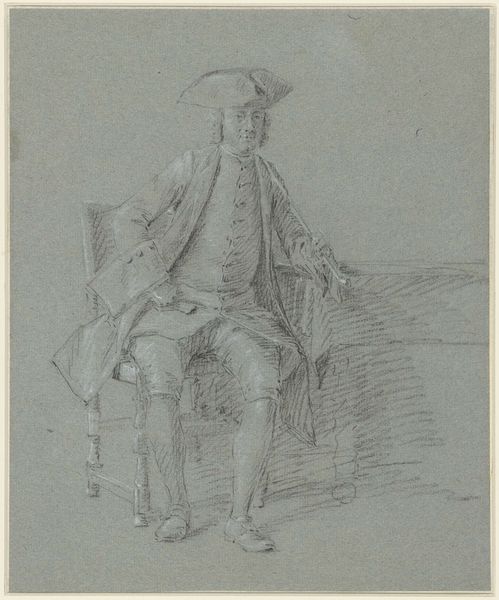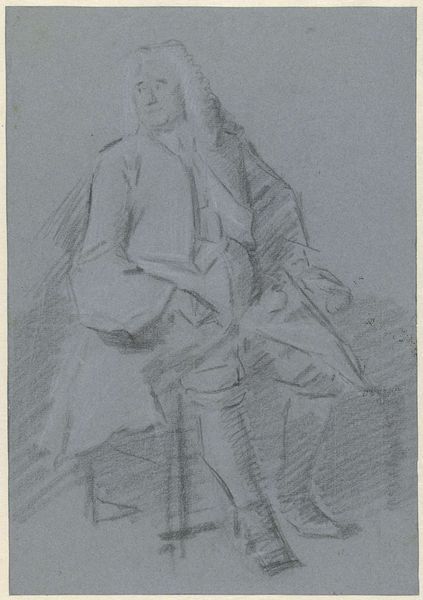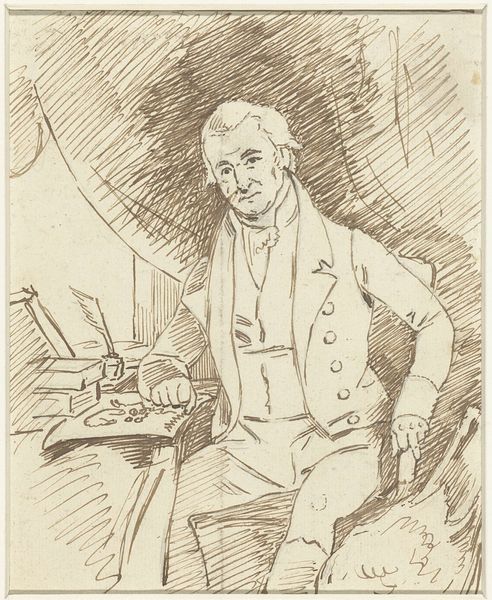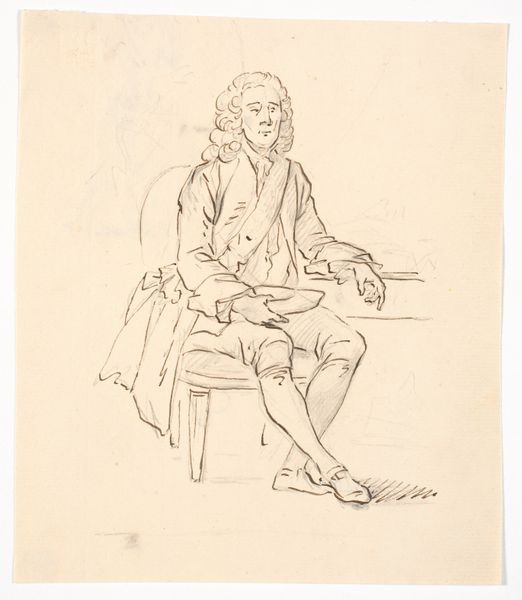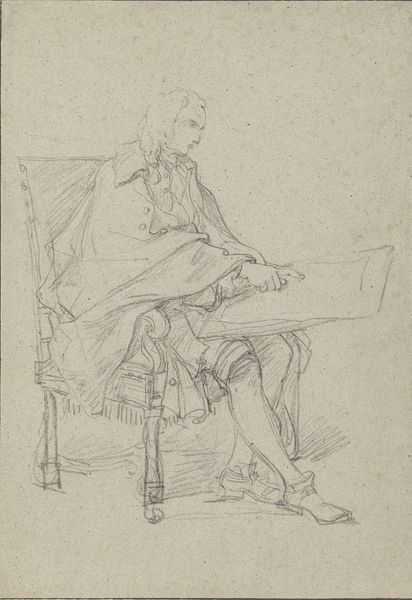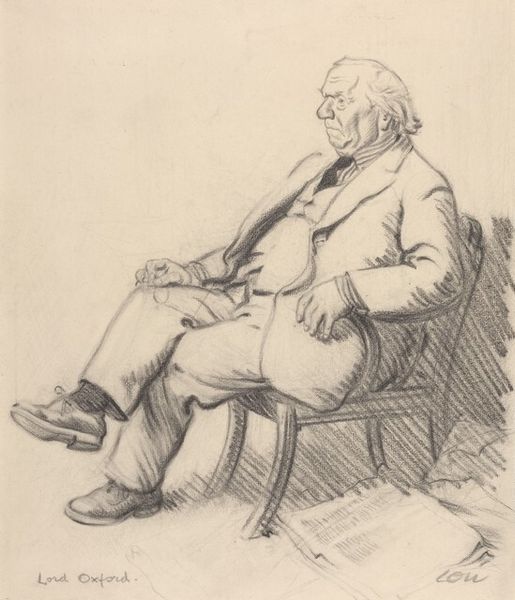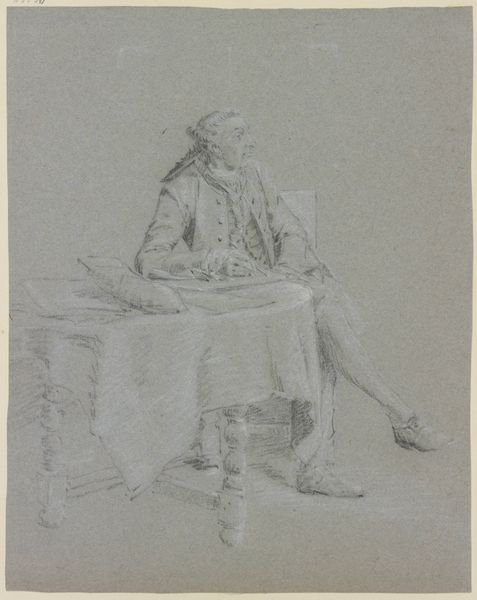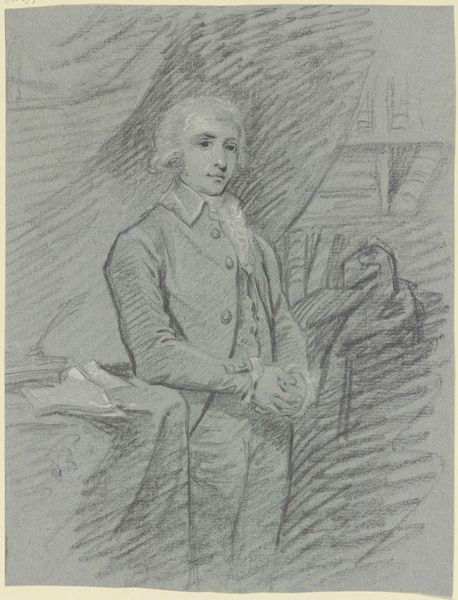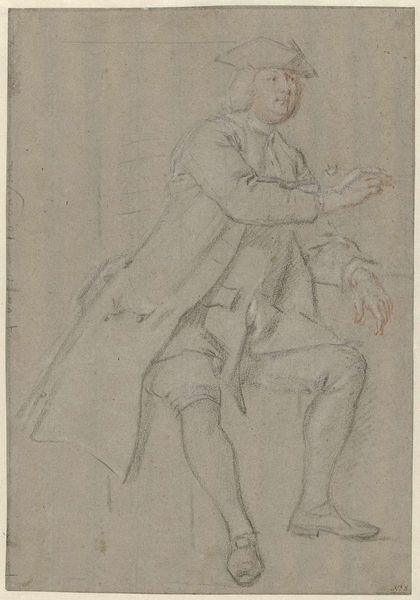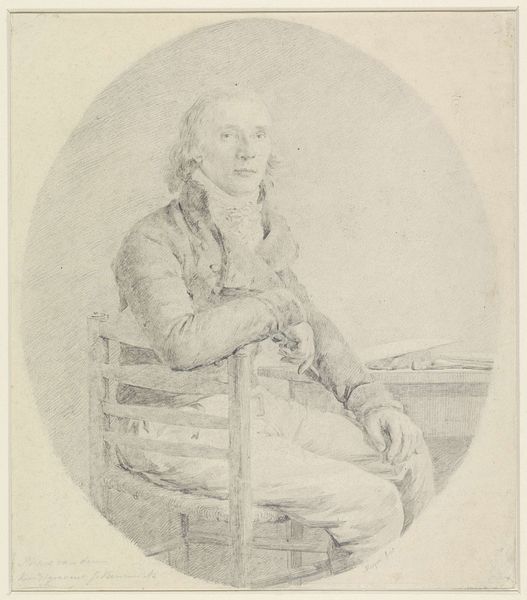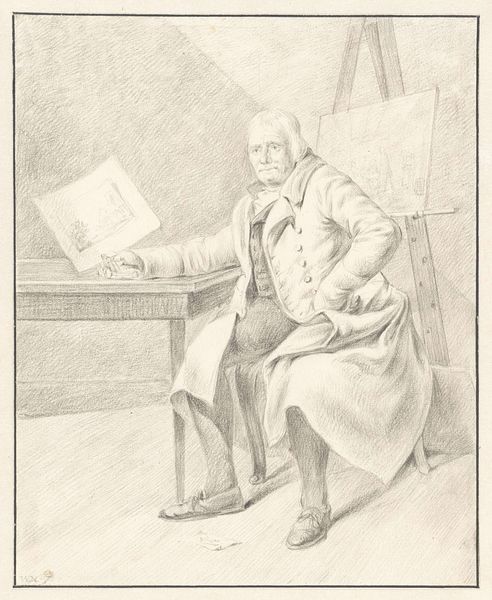
drawing, pencil
#
portrait
#
drawing
#
pencil drawing
#
pencil
#
genre-painting
#
academic-art
Dimensions: height 314 mm, width 274 mm
Copyright: Rijks Museum: Open Domain
Curator: Before us is a pencil drawing titled "Portret van een heer, zittend aan een tafel", which translates to "Portrait of a gentleman, sitting at a table," dating from 1763 to 1833. Editor: There's a certain understated elegance to it, wouldn’t you say? The softness of the pencil creates a tranquil, almost pensive mood. Curator: Indeed. Note how the artist masterfully employs light and shadow. The cross-hatching technique to define the folds in his clothing and the subtle tonal gradations across the face display an impressive command of form and light. Editor: It's a seemingly simple composition—a man in a chair at a table. But when viewed through the lens of the late 18th and early 19th centuries, consider the power dynamics at play. This portrayal signifies status, the importance of lineage, and also a level of relaxation not afforded to the common classes. The closed environment indicates something, doesn’t it? Curator: I agree, it may emphasize those values. Yet, observe the deliberate blurring of the background, almost abstracting the details of the curtains, allowing the central figure to take full precedence. It directs the viewer’s gaze. Also consider how this directs attention toward formal details, such as line quality. Editor: True, but even those aesthetic choices had cultural meaning. By minimizing environmental context and emphasizing a figure’s posture, portraiture contributed to identity construction, solidifying his position in society, and reinforcing ideals of masculine virtue and societal standing. Curator: I appreciate how your perspective underscores how art is always a product of its time. Looking at this portrait, my mind turns to those careful pencil strokes, those delicate shadings that define form and texture, that make the man and his place in space palpable on the page. Editor: And that page becomes a stage where social roles and norms play out, doesn't it?
Comments
No comments
Be the first to comment and join the conversation on the ultimate creative platform.
